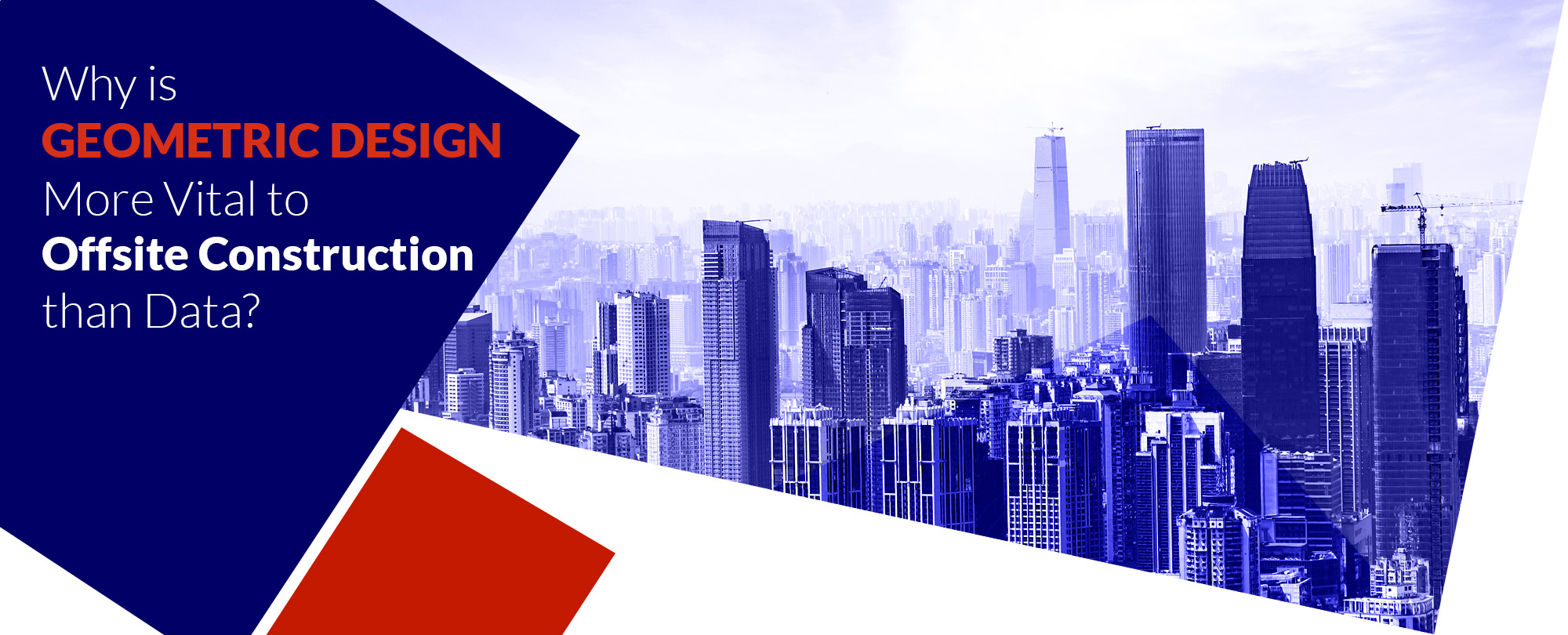For offsite construction, the focus should not be just on data but also on the geometric design. Lee Mullin of Autodesk states this opinion that is a renowned name in the construction industry.
Here we are proceeding to address the influence of geometric design in the construction industry. Especially it holds vitality in the offsite construction.
From the release of the Farmer Review- Modernise or Die, in the UK, people perceive that the industry is moving towards offsite construction.
However, discussions with many contractors revealed that they consider offsite construction only as an option. They follow it when there is a tight schedule, or some other unavoidable restrictions make it compulsory. So, they usually consider it as an afterthought.
Since, last decade, this approach of offsite construction was in question. But now, it has been looked upon as an advanced movement made by the government. Their reports endorsed offsite construction, and so, the rest of the construction industry caught up with this trend.
The benefits of this strategy are visible enough. The most significant advantages occur when you consider this offsite construction at earlier stages. When you embed it as a part of design process, you can see the changes in the report of Digital Built Britain from Bryden Wood.
What can be done to adopt the strategy?
So, if adoption of a strategy requires changes in the design process, then its correct time to inculcate BIM processes. To improve the flow of information and reduce the risks of working on old or deficient knowledge, UK standards like PAS1192-2 are essential. They ensure that the association on site is active.
There was much discussion about BIM in the UK, regarding the data importance and the usage of standards like Cobie.
This standard is essential for quite a range of tasks like maintenance and operations processes. Also, it can even be useful earlier in the method of procurement. Basically, offsite construction succeeds or fails by the geometric design information’s quality.
What should be done to implement offsite construction?
When we move towards a construction process in building and infrastructure output, we have to be aware of the specific techniques. Clash management, Building Intolerances, Clash Detection, and Expansion Joints are some terms which you should know. We should also understand the materials, interfaces, and components for maintaining the quality of the built property.
Consider if the car manufacturers released their models without quality testing and running multiple checks on each model. Would we still purchase and feel safe to drive them?
We can keep the LAX approach to design tolerances, and then verify construction within the set tolerances. We can even notably follow up when there are errors due to schedules, even with a transparent approach of the projects. But, it doesn’t act on a ‘manufacture and assembly’ approach to buildings.
The errors should be avoided
The undesirable effect of non-coordination and poor design can result in the elements not fitting, and they may need a manual change on-site. Further, there may leakage problems, reduced energy performance, and non-maintainable parts could create havoc. Also, there can be changes that may wait many weeks for an alternative.
This situation already happens with some offsite construction elements, for example, windows and doors. On a larger-scale, it can get considered as tolerance stack-up, where the items can have an error of –/+ 3mm. But, when you multiply this effect across any assembled part, all the faults could turn into centimeters, which affects the fitting of each piece.
There exist two solutions to this-
- First, to build with higher tolerances, this also comes with the implications of costs.
- Second, is to cover up these errors in the design itself by working like the MEP Fabricators. You can continue developing the LODs of BIM.
We can eliminate design inefficiencies in the process of converting 2D drawings automatically from the 3D models. Also, parametric modeling reduces the uncertainties of mistakes when doing a change. Each adjustment scatters across prototypes, 2D sheets and plans.
Most hardware manufacturers rely primarily on Numeric Control (NC) files to recognize dimensions, shapes, positions, angles, and notches. They mostly come from the 2D inputs of fabrications drawings. Therefore, we need to ensure that 2D documentation is in-sync with the team members. Also, the first level to check that the digital model can be functional is a model-based approach.
Conclusion
Of course, we can’t ignore the value of data in the construction industry. In fact, the ideal situation here will be having high-quality data as well as geometric design. But, let’s not go ahead only personally: the significant tasks our construction industry has to work are- sharing knowledge and decreasing waste and repeated work.
If we wish to do better, we should first tackle the errors we still make every day.
